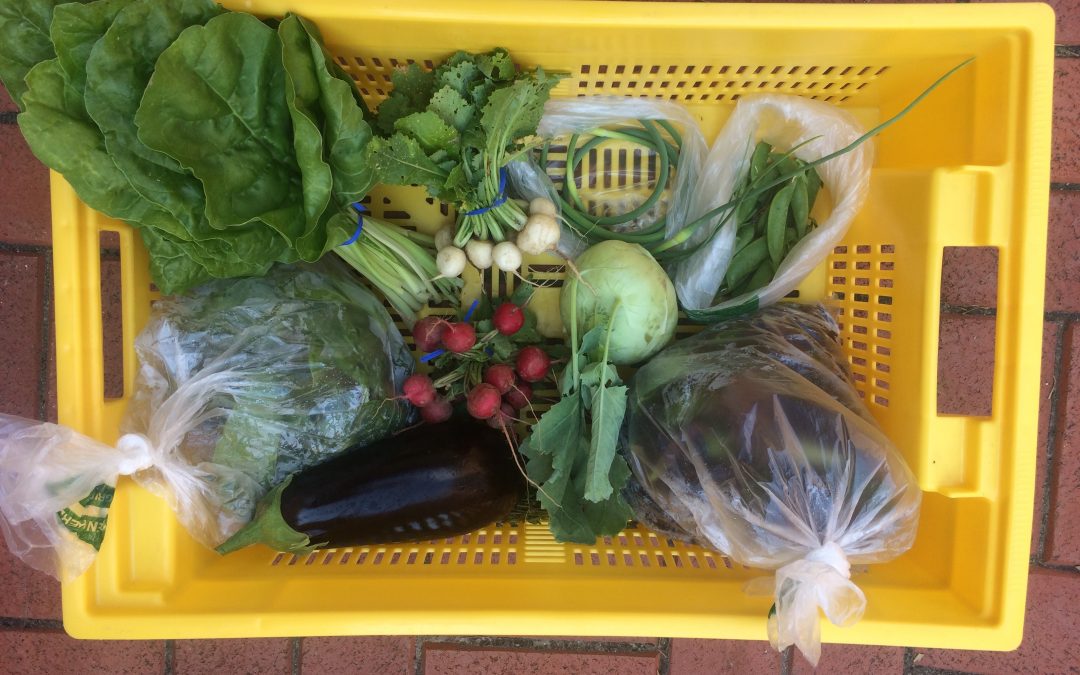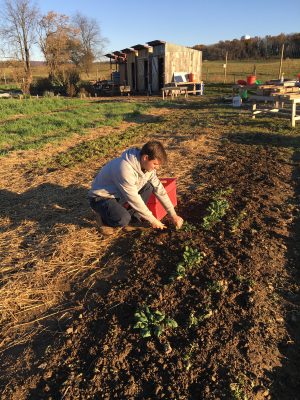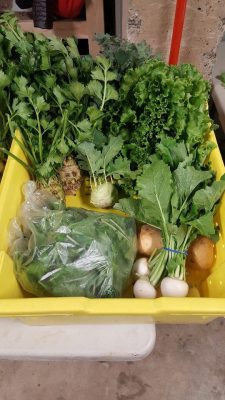By: Jake Wozniak, senior Agribusiness Mangement, Horticulture concentration
Since resuming my internship at the Student Farm this fall, I have learned and grown immensely. I’ve learned a great deal including: how to harvest a variety of crops, operate our Community Supported Agriculture model, and lead and teach groups of volunteers.
Harvesting our crops is of the utmost importance, and is the backbone of our farm. Without regular harvests we wouldn’t have customers, and without customers we wouldn’t exist. Because it is such an important task, we harvest regardless of the weather or time of day. I’ve had to stay late, come in early, and work in pouring rain to make sure the necessary harvest gets done so delivery goes out on time. When it comes to meeting the demand of our customers, we always get the job done.
I learned how to recognize when a crop is ripe and how to harvest it efficiently and safely with proper technique. Each crop has different standards to signify that it is ripe. The peppers alone have varying standards. For example, bell peppers, jalapeños, and poblanos ripeness is based on size, but for Tai chili and habanero peppers it is based on color. Also, different crops use various harvest techniques. To harvest fingerling potatoes you use a shovel, and first check the depth and width that they have grown. This reduces the amount that are damaged and the amount that are left in the soil. When harvesting mini tatsoi on the other hand, you use a knife and cut at the very bottom of the plant being very careful not to break the delicate stems. Harvesting is one of my favorite tasks because you get to see the fruits of your labor. The only thing better than seeing the fruits of our labor is giving those ‘fruits’ to our wonderful and supportive CSA members.
This fall I managed our CSA model with a fellow intern. During pickup hours I met many members of the community and got to see the delight and excitement on their faces as they received the produce we’ve grown for them. Seeing the process full circle like that, all the way from seed to consumer, really makes all the hard work worth it. I also learned so much about the vegetables through managing this segment. I learned about proper packing to maximize long lasting freshness, and interesting facts like kohlrabi is more flavorful after it rains. And I learned many dishes that can be made with our veggies such as using the radishes and cilantro in a quinoa salad or butternut squash and kale in a torte recipe. I learned these facts about our vegetables with the goal of sharing them with our CSA members.
I was also lucky enough to work alongside and lead groups of volunteers. Seeing individuals and groups come together and volunteer their time to support the production of sustainable local agriculture is a beautiful thing. Learning to facilitate that process was a challenging but rewarding one. Some groups already knew each other, in which case I mostly focused on teaching about farm practices. Other groups came as strangers to one another, and facilitating that introduction and relationship building process, so we could work as an effective team, took precedence for me.
Although I have been an intern since March, it feels like only yesterday that I was arriving at the Student Farm for my first day of work. The weather is getting cold again, production is slowing, and we are beginning to cover crop to prepare for winter. With that, hours are shorter and fieldwork will soon be nonexistent, besides the high tunnel, until spring. For me going to work each day at the Student Farm has been a pleasant escape that I am grateful for rather than a dreaded job or chore. It is a break from homework, class, and meetings. I don’t always look forward to going in to work, but I, without fail, always feel better once I get there and it improves the rest of my day after I leave.



